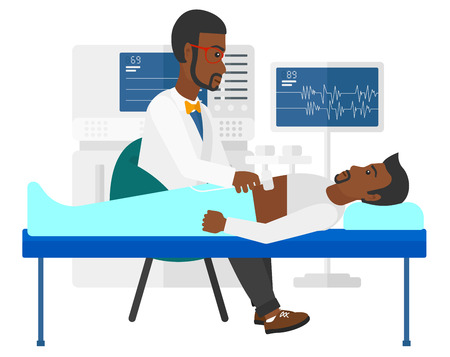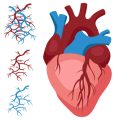Introduction to Spasticity in Neurological Conditions
Spasticity is a common and complex motor disorder frequently encountered in individuals with neurological conditions, particularly within the context of British rehabilitation services. Defined as a velocity-dependent increase in muscle tone due to hyperexcitability of the stretch reflex, spasticity can significantly impair functional abilities and overall quality of life. In the United Kingdom, it is most commonly associated with conditions such as stroke, multiple sclerosis (MS), cerebral palsy, and traumatic brain or spinal cord injuries. The prevalence of spasticity varies by underlying diagnosis; for instance, studies suggest that up to 40% of people post-stroke and around 80% of those with MS may experience some degree of spasticity during their lifetime. Given the burden this condition places on both individuals and the NHS, addressing spasticity through effective management strategies has become a central concern for British rehabilitation teams. This introductory discussion sets the stage for exploring how UK-based healthcare professionals assess and manage spasticity, taking into account local service structures, clinical guidelines, and patient-centred care principles.
Overview of British Rehabilitation Services
Rehabilitation services in the United Kingdom are structured to provide comprehensive care for individuals living with neurological conditions, such as spasticity, through a well-coordinated network within the National Health Service (NHS) and community-based settings. The NHS model prioritises accessibility, patient-centred care, and multidisciplinary collaboration to ensure optimal outcomes for patients. These services are delivered across acute hospitals, specialist rehabilitation centres, community clinics, and at home, depending on individual needs and the complexity of their condition.
Structure of Rehabilitation Provision
The delivery of rehabilitation in the UK is categorised into several tiers:
| Level | Description | Typical Settings |
|---|---|---|
| Acute Rehabilitation | Initial phase post-injury or diagnosis; focuses on stabilisation and early functional recovery. | Acute hospital wards, stroke units |
| Specialist Inpatient Rehabilitation | Intensive therapy for complex cases requiring multidisciplinary input. | Specialist rehabilitation centres |
| Community-Based Rehabilitation | Ongoing support aimed at reintegration and long-term management. | Community clinics, patient’s home, outpatient departments |
Multidisciplinary Team Approach
A hallmark of British rehabilitation services is the involvement of multidisciplinary teams (MDTs). These teams typically comprise physiotherapists, occupational therapists, speech and language therapists, specialist nurses, rehabilitation physicians (consultant physiatrists), psychologists, and social workers. The MDT collaborates closely with patients and their families to set realistic goals and tailor interventions. Regular team meetings ensure that all aspects of the patient’s physical, psychological, and social needs are addressed holistically.
Integration Across Care Pathways
The NHS emphasises seamless transitions across different stages of care. For instance, when a patient is discharged from an acute setting to the community, detailed handovers and shared care plans facilitate continuity. Community rehabilitation teams often liaise with GPs and local authority services to coordinate ongoing support such as equipment provision or home adaptations. This integrated approach is designed to reduce hospital readmissions and promote independence.
Cultural Context in UK Service Delivery
British rehabilitation services operate within a framework that values equity and inclusivity. There is a strong emphasis on respecting patient autonomy while delivering evidence-based interventions. Where possible, services are tailored to accommodate cultural preferences and individual circumstances, reflecting the diversity found across UK communities.

3. Assessment and Identification of Spasticity
Effective management of spasticity within British rehabilitation services begins with a comprehensive assessment and identification process. British clinicians employ a combination of standardised assessments, validated tools, and structured clinical pathways to ensure the accurate recognition and ongoing monitoring of spasticity in neurological conditions.
Standard Assessments Utilised in the UK
The Modified Ashworth Scale (MAS) is widely regarded as the cornerstone for grading muscle tone in individuals presenting with spasticity across NHS services. This scale offers a quick and reliable means for clinicians to quantify resistance during passive soft-tissue stretching. In addition, the Tardieu Scale is favoured for its ability to differentiate between neural and biomechanical components of muscle stiffness, providing nuanced information that informs tailored interventions.
Tools for Comprehensive Evaluation
In conjunction with these scales, British practitioners often incorporate functional outcome measures such as the Barthel Index or the Functional Independence Measure (FIM) to evaluate how spasticity impacts activities of daily living. Patient-reported outcome measures—including the Goal Attainment Scaling (GAS)—are also embedded into practice to capture individual goals and treatment efficacy from the patients perspective, ensuring that care remains person-centred.
Clinical Pathways and Multidisciplinary Collaboration
Within NHS rehabilitation frameworks, clear clinical pathways guide the assessment journey. Typically, an initial referral leads to a multidisciplinary team assessment involving physiotherapists, occupational therapists, and consultants in rehabilitation medicine. This collaborative approach ensures all relevant domains are addressed, including pain, function, range of movement, and impact on quality of life. Regular re-assessment is standard practice, allowing for dynamic adjustment of management strategies as patient needs evolve over time.
The robust use of these assessments and pathways underpins best practice in identifying and monitoring spasticity throughout British rehabilitation services. By systematically combining objective measurement tools with person-centred evaluation and multidisciplinary input, clinicians can develop effective, responsive care plans tailored to each individual’s needs.
4. Pharmacological and Non-Pharmacological Management Strategies
Effective management of spasticity in neurological conditions within British rehabilitation services relies on a combination of pharmacological and non-pharmacological strategies. These approaches are routinely implemented across NHS trusts, with the choice of intervention tailored to the severity of symptoms, patient goals, and co-existing medical conditions. Understanding the distinct roles and complementary nature of these interventions is key to achieving optimal outcomes for individuals affected by spasticity.
Pharmacological Interventions
The use of medicines remains a cornerstone in spasticity management, particularly where physical therapies alone prove insufficient. The following table summarises common pharmacological options adopted in UK practice:
| Medicine | Mechanism of Action | Common Indications | Notes (UK Practice) |
|---|---|---|---|
| Baclofen (oral) | GABA-B agonist; reduces neurotransmission in CNS | Generalised spasticity in MS, spinal cord injury, cerebral palsy | Titrated slowly to minimise side effects such as drowsiness |
| Tizanidine | Alpha-2 adrenergic agonist; inhibits motor neuron firing | Mild to moderate spasticity | Liver function monitoring advised per NICE guidance |
| Dantrolene sodium | Acts directly on skeletal muscle; reduces contraction strength | Severe generalised spasticity unresponsive to other agents | Cautioned due to risk of hepatotoxicity; used under specialist supervision |
| Botulinum toxin injections | Blocks acetylcholine release at neuromuscular junctions | Focal spasticity (e.g., upper limb post-stroke) | Administered by trained professionals; NHS England commissioning guidance applies |
Non-Pharmacological Interventions: Therapies and Rehabilitation Approaches
The British rehabilitation framework places significant emphasis on adjunctive therapies, which are delivered by multidisciplinary teams comprising physiotherapists, occupational therapists, and speech and language therapists. These interventions are essential both as standalone treatments and as complements to medication.
Physiotherapy
Physiotherapy focuses on maintaining or improving range of motion, preventing contractures, and enhancing functional mobility. Techniques commonly employed include stretching regimes, strength training, postural management, and task-specific exercises. In many NHS centres, hydrotherapy is also utilised for its low-impact benefits.
Occupational Therapy
Occupational therapists work with patients to optimise independence in daily activities. This may involve provision of adaptive equipment, splinting for limb positioning, environmental modifications at home or workplace, and education for both patients and carers on safe handling practices.
Interdisciplinary Approach and Individualisation of Care
A hallmark of UK practice is the integration of care plans across disciplines. Regular multidisciplinary meetings ensure that pharmacological treatments are reviewed alongside therapy progress, allowing adjustment based on patient response and changing needs. Patient-centred goal setting is prioritised throughout the rehabilitation journey.
5. Patient-Centred Approaches and Individualised Care Plans
Within the landscape of British rehabilitation services, a patient-centred approach is fundamental to effective spasticity management for individuals with neurological conditions. Recognising that each service user presents with unique challenges, preferences, and life circumstances, British clinicians increasingly prioritise the development of individualised care plans. This philosophy aligns closely with the principles set forth by the NHS and other UK-based health organisations, which emphasise respect for patient autonomy, dignity, and shared decision-making.
Tailoring management strategies involves comprehensive assessment not only of clinical symptoms but also of social, cultural, and psychological factors affecting the person’s daily life. For example, British rehabilitation teams may consider factors such as a patient’s home environment in a terraced house, employment status within local industries, or reliance on public transport when recommending interventions like physiotherapy schedules or adaptive equipment. The aim is to ensure that strategies are both clinically effective and practically sustainable in a UK context.
Furthermore, the perspectives of service users and carers are actively sought and valued in the British system. Multi-disciplinary meetings commonly include family members or designated carers to discuss treatment goals and potential barriers. This collaborative process is supported by national guidance, such as those from NICE, advocating for meaningful involvement of patients and carers in care planning. In practice, this could mean adapting therapy times around school runs or considering cultural dietary preferences when addressing medication regimens.
From a cultural standpoint, British values of individual choice and community support underpin these approaches. Rehabilitation professionals are trained to communicate clearly, respect confidentiality, and adapt recommendations sensitively to diverse backgrounds found across England, Scotland, Wales, and Northern Ireland. Carers wellbeing is also considered integral; support groups and respite care services are routinely signposted as part of holistic care packages.
In summary, effective management of spasticity through British rehabilitation services hinges on recognising the individuality of each patient and their support network. By embedding person-centred principles into every stage—from initial assessment to ongoing review—clinicians can deliver interventions that are both evidence-based and culturally attuned to the expectations and realities of life in the UK.
6. Challenges and Future Directions in British Rehabilitation Services
The management of spasticity within the UK’s rehabilitation services faces several persistent challenges, which impact the delivery of optimal care to individuals with neurological conditions. Chief among these are disparities in access to specialist services, variability in local resource allocation, and a need for further integration across multidisciplinary teams. While the NHS provides a framework for universal care, regional differences often mean that advanced interventions—such as intrathecal baclofen pumps or specialist botulinum toxin clinics—are not uniformly available. This results in unequal outcomes and patient experiences across the country.
Barriers to Optimal Spasticity Management
One significant barrier is the shortage of trained professionals with expertise in spasticity management, particularly in rural or underserved areas. The complexity of coordinating between neurologists, physiotherapists, occupational therapists, and community teams can also impede timely intervention. Additionally, lengthy waiting times for specialist assessment or follow-up contribute to suboptimal control of symptoms. Financial constraints within NHS Trusts may limit access to emerging technologies or advanced pharmacological options, further compounding these issues.
Systemic Limitations and Patient Engagement
Bureaucratic hurdles can hinder rapid adoption of new evidence-based practices within NHS pathways. Moreover, the lack of consistent patient education resources means that some individuals remain unaware of self-management strategies or available treatment options. Effective communication between clinicians and patients is vital; however, time pressures during consultations often restrict comprehensive discussion about long-term goals and therapy choices.
Emerging Trends and Innovations
Despite these obstacles, several promising trends are shaping the future of spasticity management in the UK. Increasing use of tele-rehabilitation platforms allows for remote monitoring and support, helping to bridge geographic gaps in service provision. Advances in wearable sensor technology and digital outcome measures are enabling more objective tracking of progress and responsiveness to treatment. There is also growing interest in community-based rehabilitation models that emphasise early intervention and continuity of care through collaboration with primary healthcare providers.
Research and Policy Developments
Current research initiatives focus on personalising interventions based on genetic markers or neurophysiological profiles, aiming to improve efficacy and minimise adverse effects. Policymakers are exploring strategies to streamline referral processes and invest in workforce development—particularly by expanding training opportunities for allied health professionals involved in spasticity care. The implementation of integrated care pathways tailored to local population needs remains a key objective for many NHS Trusts.
Looking Ahead
The future of British rehabilitation services rests on addressing existing barriers while embracing innovative solutions. Collaborative networks between tertiary centres, community teams, and voluntary organisations are likely to enhance both service quality and accessibility. With continued investment in research, workforce education, and digital infrastructure, the UK can strive towards equitable and effective spasticity management for all individuals living with neurological conditions.


